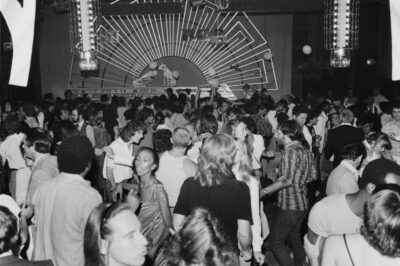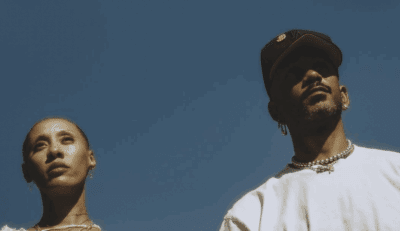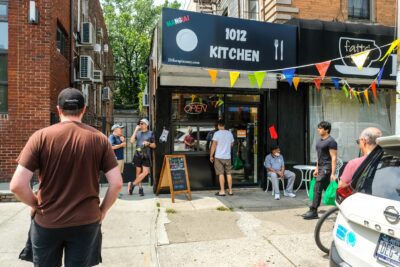The Gay 90s: Michael Lieberman on Queer Cinema at the Turn of the Century
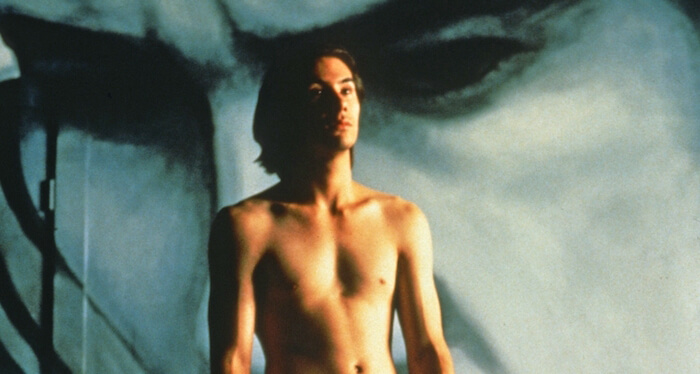 Whether it’s the passionate tango in Wong Kar-wai’s Happy Together, the wild pageantry-atop-RV in The Adventures of Priscilla, Queen of the Desert, the iconic canyon dive of Ridley Scott’s Thelma and Louise, the narcotic intoxication of Lisa Cholodenko’s High Art, or the sweet melancholy of River Phoenix pining in Gus Van Sant’s My Own Private Idaho, what it meant to be queer in the 90s, in film, has a picture for each viewer. Critic and historian B. Ruby Rich would describe the wave of films from the 1990s radically confronting subjects of identity, politics, sex, and gender as the New Queer Cinema, but, as the Queer 90s series beginning today at the Metrograph opines, queer cinema of the time was as expansive as the word itself. Programmed by Michael Lieberman, the series examines the radical, the ravishing, and the revolutionary queerness of the cinema of the 1990s. I talked with Lieberman about the origin of the series, the changing cultural landscape, respectability politics, and what could be next for queer film.
Whether it’s the passionate tango in Wong Kar-wai’s Happy Together, the wild pageantry-atop-RV in The Adventures of Priscilla, Queen of the Desert, the iconic canyon dive of Ridley Scott’s Thelma and Louise, the narcotic intoxication of Lisa Cholodenko’s High Art, or the sweet melancholy of River Phoenix pining in Gus Van Sant’s My Own Private Idaho, what it meant to be queer in the 90s, in film, has a picture for each viewer. Critic and historian B. Ruby Rich would describe the wave of films from the 1990s radically confronting subjects of identity, politics, sex, and gender as the New Queer Cinema, but, as the Queer 90s series beginning today at the Metrograph opines, queer cinema of the time was as expansive as the word itself. Programmed by Michael Lieberman, the series examines the radical, the ravishing, and the revolutionary queerness of the cinema of the 1990s. I talked with Lieberman about the origin of the series, the changing cultural landscape, respectability politics, and what could be next for queer film.
Brooklyn Magazine: How’d the series come together? What was the impetus and why now?
Michael Lieberman: Well, it was something I had thought about in recent years. Especially when looking at the landscape of queer films, or films with any queer subtext. Especially how it seems that films by queer people are designated to a less open space than when I was a teenager, in the 1990s. Or even films with interesting, dynamic, queer characters are all but missing from multiplexes. And just thinking about what I saw as a teenager, films such as Trick, Nowhere, The Birdcage, Blue, I thought: what happened?
Do you know/remember what the first queer film you saw was? (However you want to define “queer film.”)
I suppose it was Basic Instinct, when my parents rented it on VHS. And I was told (and my parents never told me not to see things) that I could not watch it. It’s not a film by and for queer people, really, but it’s a really audacious work by a great filmmaker. And I remember asking my parents about the lesbian relationship in the film, and they were sort of at a loss at how to explain things. But of course, as a gay man, it was different. I wasn’t attracted to the subjects. But the mood of the film is intoxicating.
I always think it’s very interesting when you can read queerness into a text that’s not necessarily made for queer people, or by them. Exploitative or otherwise, that always fascinates me.
Yes, me too. I think the 90s was the last decade where this was prevalent at all. It was an era of centrist conservatism, that felt utterly stifling, but in retrospect there was a strange freedom about the time. In the aughts, queer films appeared in their own film festivals more and more, and sexuality in general was wiped from mainstream cinema.
I recall an article in a publication (I don’t recall which one) making a delineation between gay films and queer films. Do you believe in that delineation? How do you think the line (or lack thereof) applies to the films you selected for the series?
The 90s was also the era of erotic thrillers, too. Imagine that in 2016. Sure, I usually think of gay films as films about gay, lesbians, bisexual folks. Queerness is about more. Gender identity, sexual expression, and something expressed in art as suggestive, rather than A or B (gay or straight).
Totally, I agree.
I think Basic Instinct is a queer experience, because of how open things in the film are, and how the sexual relationships are all indeterminate. And Nowhere too, Gregg Araki’s great film. I don’t think the word “gay” is uttered once (If I recall correctly), but it’s an absolutely open environment for queerness to flourish.
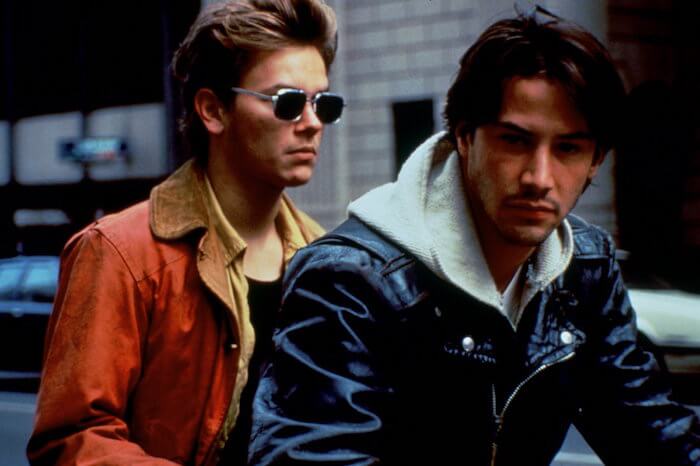

And I think he uses queer in The Living End, its connotations the same as ours.
Right. And perhaps some may think of this as an outdated thing. And perhaps it is to some extent. I value the absolute freedom of sexuality and gender expression and that’s hard when you have to also make a work of art for a straight/cis audience.
Oh, absolutely. Your Queer 90s series is coming in the same year as Lincoln Center’s Pre-Stonewall series, and both a year after the Supreme Court’s ruling on marriage equality. Why do you think the New York film scene has decided to devote time to extensively catalogued and carefully curated series like these?
Well, I think we forget how monumental the times we live in are, especially if one considers where things were 20 years ago. So it’s important to look back to compare to the present, to see how we got here. The Pre-Stonewall series was programmed by my friend Thomas Beard, who did an incredible job of cataloguing the history of queer cinema prior to 1969. I had “Queer 90s” in mind for a few years now, after seeing Andrew Haigh’s Weekend. I thought: when was the last time straight people watched such a queer film? And I couldn’t think of much post-2000.
What went into creating the rhythm for the series? The films span so many genres and styles.
Well, I wanted to create something of an anthology of queer cinema from the 90s, and I couldn’t really find one anywhere. And for me, as someone who studied experimental film, I began with Sadie Benning, Warren Sonbert and Derek Jarman, as they made the most radical films of the period. From there, I just took stock of what was released and created a very long list (over 100 films) and pared down based on what prints were available, and by only showing one feature length film or program per filmmaker. So I wanted the series to be big picture and reflect as much as possible, without deviating too far.
That must have been difficult, paring down.
It was, and sometimes painful too! But I’m happy with the 30 films we’re showing.
What film in the series resonates with you the most personally?
Well, that’s a great question! I think My Own Private Idaho is sort of the ultimate queer 90s film, since it’s so ambiguous. And the decade, as much as it was about declaring feelings, is only found here in pop culture. It’s hermetic and deeply sad here, in My Own Private Idaho.
I am personally really happy you included The Wedding Banquet, which is a favorite of mine (and better than Brokeback Mountain, in my opinion). But, The Wedding Banquet is a good example of a theme that quite often runs through queer cinema: the (lack of) reconciliation between tradition and modernity. And that often manifests in a breakdown of communication. That kind of idea is in/informs many of the films in this series, no?
Absolutely. The Wedding Banquet was a huge breakout hit when it came out, too, and really started Ang Lee’s career in the US. Reconciling your sexuality with family is still something we all struggle with, and that film really doesn’t seem that dated in retrospect, remarkably. That’s really what we’ve found expressed in mainstream culture since the 90s, like Modern Family: incorporating queer people in straight-laced families. This stuff is for straight folks, ultimately. The Wedding Banquet, remarkably, is for everyone.
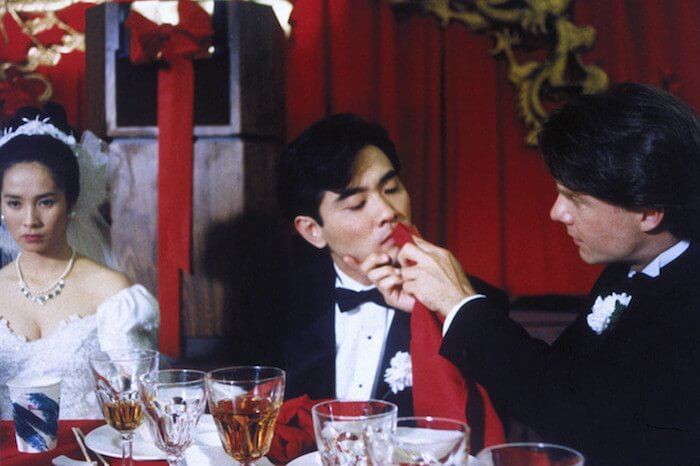

That’s what I adore about it. Did you ever see that loose remake Touch of Pink from 2004?
I did not, I’m ashamed to say!
Same basic plot, but Kyle MacLachlan plays Cary Grant. Who is a figment of the Indian-British protagonist’s imagination.
Oh, I love Kyle MacLachlan so much! That’s just wild—I am going to watch this immediately!
It’s a very odd film. What kind of groundwork do you think the films in this series laid for contemporary queer cinema? How has contemporary queer cinema, broad a label though that may be, changed since the 90s?
Well, I think the 90s was absolutely key for independent queer cinema. Something like Poison felt unbelievably remarkable at the time, but it also opened the door for experimentation in sort of Sundance-friendly American cinema. A film like Spa Night (which opened at Metrograph, where I work), is also about the reconciliation of family/queerness, but the great thing is that it’s about just a small group of Korean-Americans. There are no white Americans to be found in this film. That’s significant, I’d say. But politically we’re a bit better off, because we don’t need as many sympathetic queer characters as we used to. Just something human.
And stylistically or aesthetically?
I think queer cinema is sort of boxed in these days, and formally speaking, and Spa Night felt very open, suggestive, and also new.
“Boxed in” in what way?
By boxed-in I mean films that don’t quite break out of a mold, that just go to LGBTQ festivals and nowhere else. We only talk about the exceptions, like Tangerine or Moonlight, not the hundreds of films that never find distribution, or an audience. The freedom of making films hits a wall once a film is finished. Where do they go and who watches them? That freedom came from the 90s independent queer cinema, I’d say.
You speak of the numerous queer films that don’t find distribution and that go mostly unwatched except at festivals. Do you see the contemporary cultural landscape allowing for more queer cinema to get distribution and get visibility? Do you see a “New New Queer Cinema” coming at all?
I think a New Queer Cinema is absolutely possible, especially that we speak of queerness as intersectional with race, immigration and class these days. I am so hopeful for the future because of that. Not that it wasn’t always this way, but right now we’re in a key moment where many issues are converging.
You mentioned a little earlier about being better off politically now. How do you think the queer cinema of the 90s navigates respectability politics versus contemporary queer cinema?
In a strange way, from what I’ve seen, the 90s were a bit more radical, politically, then contemporary queer cinema. New Queer Cinema, as a movement, was a force of nature, and fiercely left wing. We’ve gone through a tumultuous twenty years since, where queerness is no longer as aligned with the Left, but with the center. With that, contemporary queer cinema is much more broad, formally and politically. But we’ve also gained some rights, and acceptance, in those same twenty years. So it’s a vital time to look at who we are, how we got here, and where we should go next.
Which leads me to my last question: Where is next? What do you think holds for the future of queer cinema and queer bodies in cinema?
I’m honestly not sure! But I think young people are incredibly thoughtful, progressive, and the future of cinema is in their hands. It’s up to young filmmakers to put characters on screen that reflect the world they both live in and want to see. But I also hope that artists can find new ways to express feelings about the times we live in, because that is essential.
Actually, one last last question. What films would you want to program for your funeral as a retro on Michael Lieberman?
Oh wow, what a question! So essentially, my favorite films?
However you want to interpret that question!
Got it! So I’d say: Eyes Wide Shut, The Magnificent Ambersons, Four Nights of a Dreamer, Sans soleil, Sansho the Bailiff, Zabriskie Point, The Hart of London and Un Chant d’amour.
You might also like 














